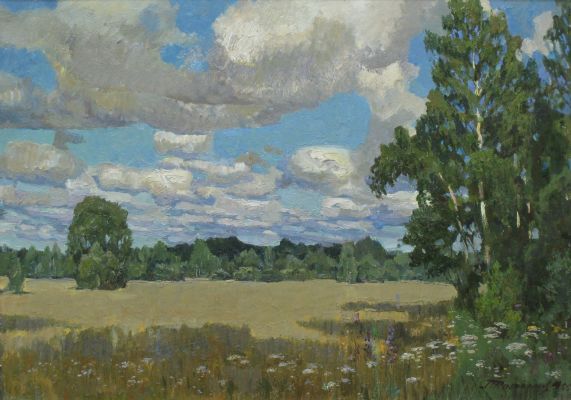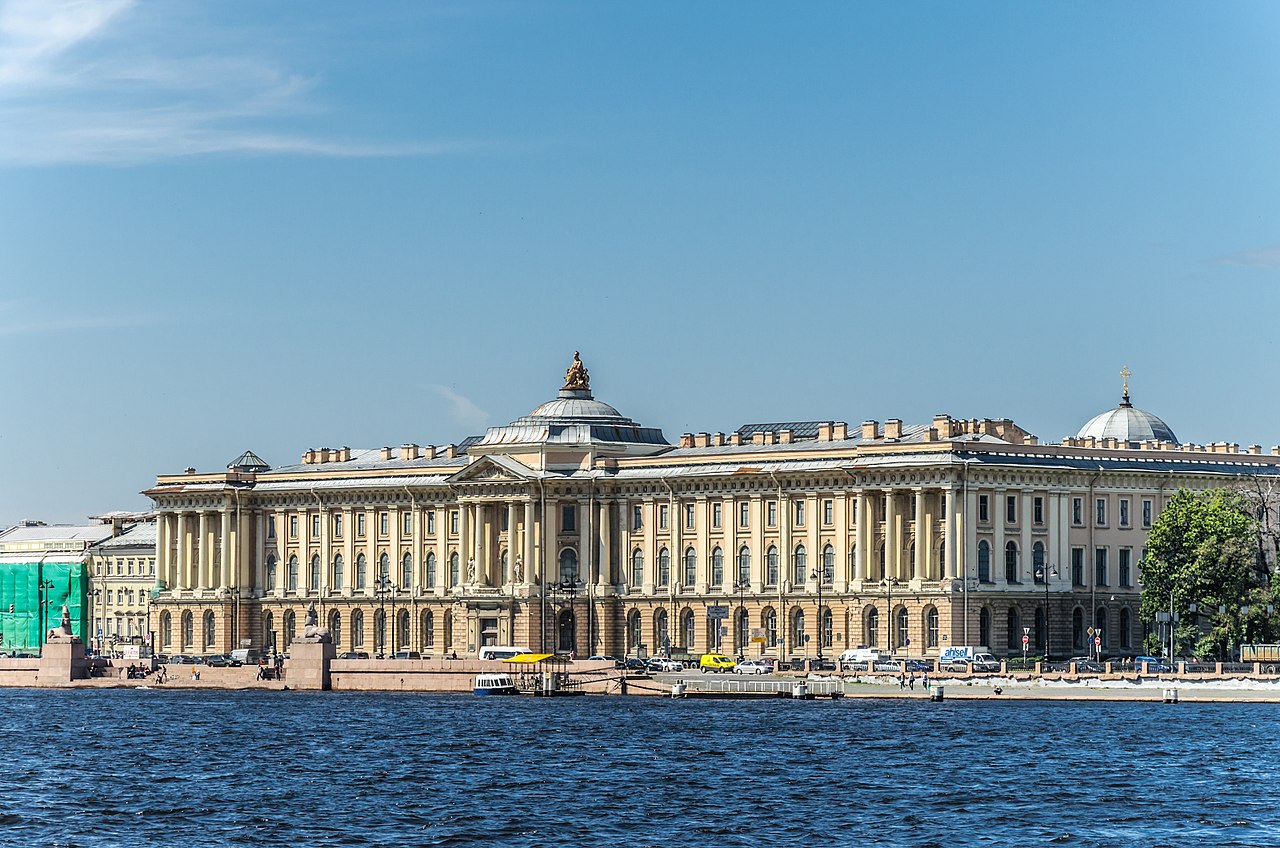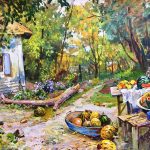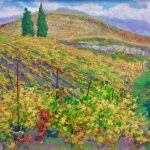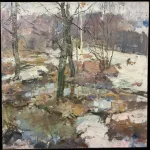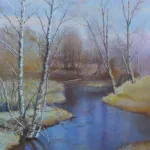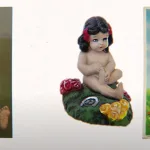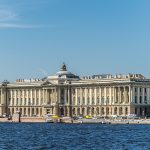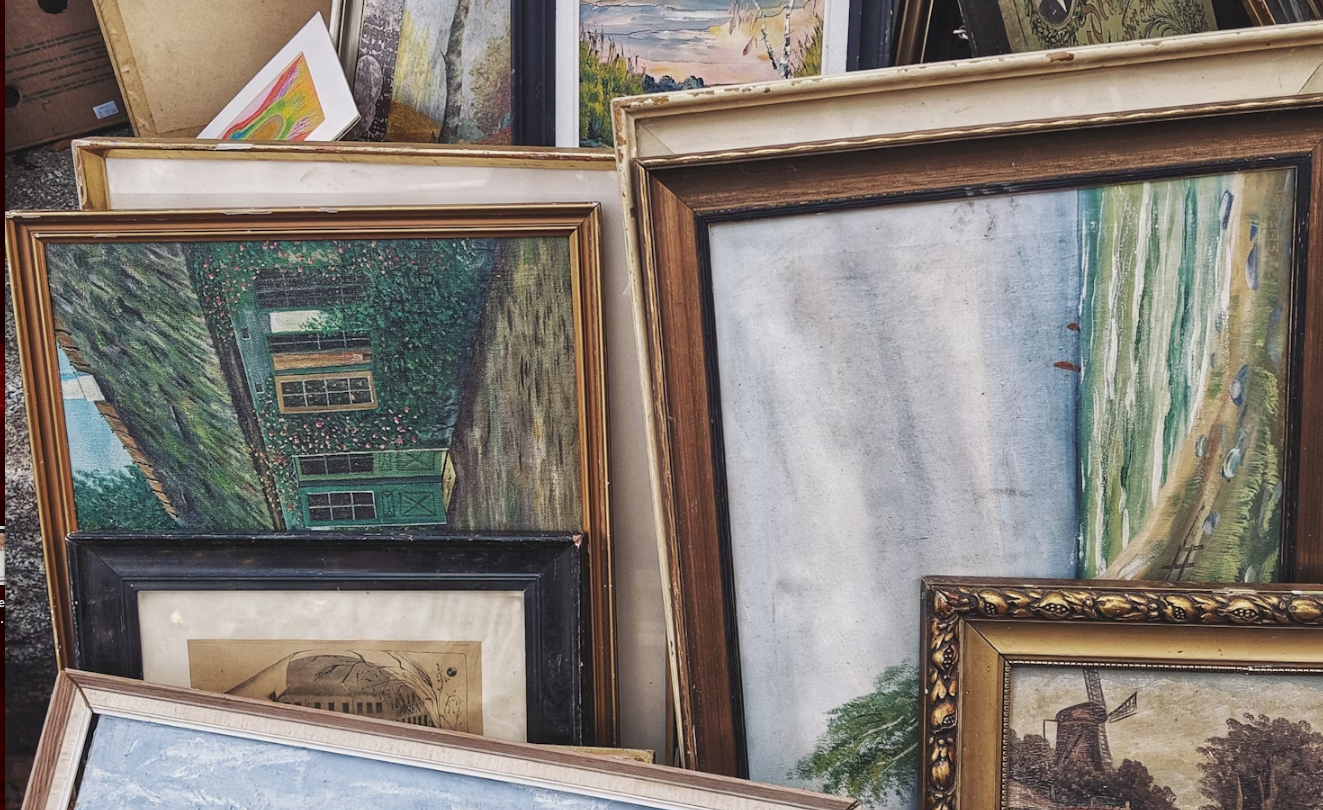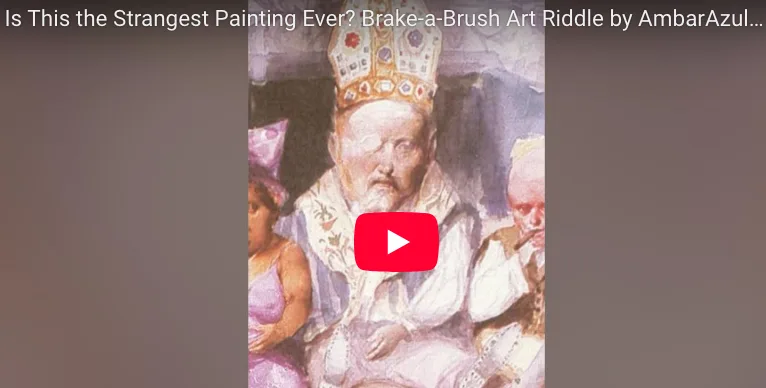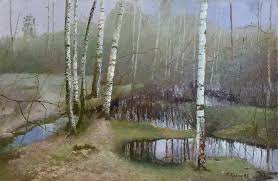
Krantz, Vladimir Pavlovich
What forms the essence of the Russian soul? What is dear to every heart? That particular warm feeling towards the wide expanse of harvest fields and the modest birch trees in early spring? The lyrical, contemplative character, which seeks for the response in a simple unpretentious view of native nature?
The lyrical landscape is the genre of painting that evokes reciprocal feeling in every Russian, especially if it is done in such brilliant manner as that of Vladimir Krantz. The life itself made him an artist. He was lucky not to be forced painting in an official formal manner, glorifying the socialist labor. The artist simply polished his brushwork, developed his coloring working hard, nevertheless staying an amateur for the bureaucrats of the Soviet art. Being an “amateur” at that time meant to be free in choice to paint landscapes – the genre that was not greeted by the authorities. The most preferable were large multi-figural pictures depicting social life or historical events.
Vladimir Pavlovich Krantz was born in Mozdok, Checknya in 1913. His mother’s origin was Cossack, and his father came from nobility. His ancestor, German born Von Rosen Krantz, was sent in exile to the Caucasus after the December uprising in Petersburg in 1825.
The artist showed his talent in early years when he studied at the atelier of a local painter, A. Turbin. After finishing the secondary school, he worked as a draftsman and got a recommendation to the Academy of Fine Arts in Leningrad (Petersburg). Just before the entrance exams, V. Krantz showed his sketches to the rector of the Academy, a prominent Soviet artist Isaak Brodsky and met with his approval.
Unfortunately, the serious disease typhoid prevented him from entering the Academy that year. In addition, in 1935 he successfully passed the exams to the Architectural Faculty of the Civil Engineering Institute in 1940. After graduating, he worked as an artist-decorator, and painted in oils independently.
After World War II, he returned to his work in the Painting and Design Group of Enterprises in Leningrad and perfected his art at the atelier of S. Nevelstein. While decorating the pavilion in Kiev he spent two months painting the picturesque bend of the river Dnepre. The landscapes brought from the trip were exhibited and admired by the professors of the Academy. The Krantz landscapes subdue the public by the touching attention and great respect of the artist to the depicted motif. He set himself high standards and purposefully painted from nature again and again. One of his most favorite places was the ancient Russian town of Staraja Ladoga in the Petersburg Region. The pictures painted there gained a great success during the first Krantz one-man show in 1967 and in 1973, he joined the Russian Artists’ Union, thus giving up the work of decorator.
Success did not come V. Krantz’s very easily. His way to acclaim was long and taxing, and only in the 1970’s his art was recognized by the public. The Japanese collector Yoko Nakamura acquired series of his landscapes, and the artist became well known abroad.
Vladimir Krantz painted the modest beauty of Russian forest and seascapes in the Crimea, working at the Academic Dachasn. There he got acquainted with many colleagues who enriched his mental outlook. Among them was a famous Soviet painter, academician Zagonek, who once presented Krantz his sketch with an inscription: “To the student surpassing the teacher.” They worked together on the same motive and Krantz’s landscape was voted the best.
The landscape of the Central and Northern Russia especially attracted the artist. He often visited the museum estate of the Great Russian poet A. Pushkin near Pskov and painted the motives, which inspired the most heartfelt verses. Worshipping the poet, Krantz presented the museum with a series of 44 landscapes, featuring the ‘dear to every heart’ motives in different seasons.
Vladimir Krantz considered Nature to be the main teacher. None of the painters greatly influenced the artist’s manner as he went his path directed mainly by his own inward intuition and original talent. He preferred painting “ala prima,” finishing his landscape in one day. Using photos was the common practice of such great masters as Vrubel and Degas, and Krantz following in their example, studied and gave a more precise definition to the juxtaposition of color, light-and-shade. He never went down to the rough naturalism or unwarranted detailing both in drawing and in coloring.
The architectural background helped the artist to build his well-balanced compositions according to the principles of “Golden Section.” For example, land should occupy one third of the picture’s space, and the sky – two thirds, or vice versa. He masterfully used his knowledge of optical illusions, thus Krantz’s drawing is always true to nature. His idols in landscape painting were the Russian artists of XX Century – F. Vasiliev, Levitan, and Shishkin. V. Krantz intentionally denied the fleeting effects so typical of the Impressionists and art of the XX Century. He saw the integrity and calm in the landscape, which should represent the stability and firmness of being.
It is always interesting to know how the artist works, how he creates the particular mood and unforgettable image, having only a canvas and some paints. Vladimir Krantz sought after the motive to depict, going round to find the right viewing point. He always chose a place with some water – a brook, a pool, which could enrich the color and composition, and give a particular charm to a landscape. The artist subdued all the elements of the composition to the well thought out scheme – clearly marking the planes. He painted shades by fluid paints, and lit parts – by impasto. Vladimir Krantz is distinguished for his penetrating attitude to nature, respect in showing details and brilliant rendering of the mood.
Vladimir Krantz was a real master of the lyrical landscape. His art is immediately recognizable in any gallery neighborhood as it rivets the eye by the romantic mood and a masterful technique. It gives the spectator an opportunity to enter the truthfully painted atmosphere of the landscape, to share the artist’s admiration. The good taste, a sense of rhythm together with following nature without copying, brings a wholeness and completeness to his fine landscapes.
By Ekaterina Denisova (Baryshnikova)
Explore artist stories, Russian avant-garde movements, and practical tips for navigating the fine art market—insightful reads for collectors and connoisseurs.
